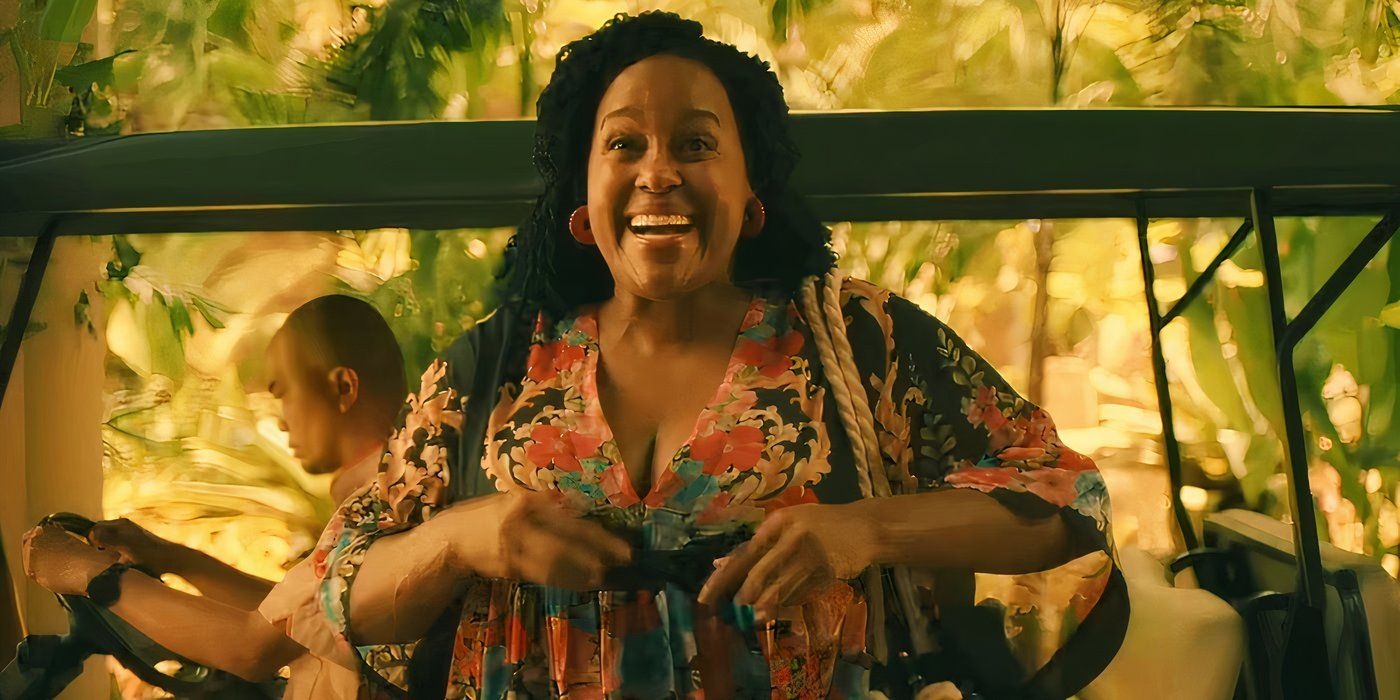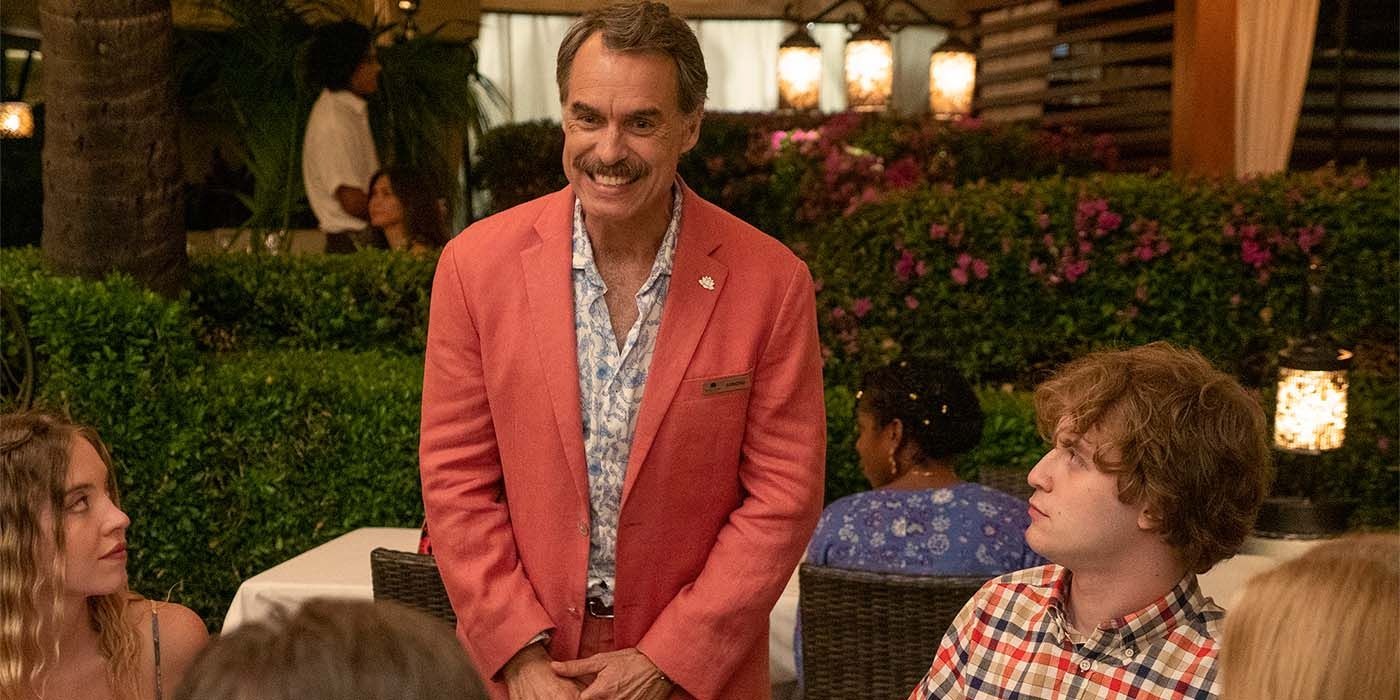Rather than beginning with a straightforward resolution, The White Lotus season 1 concludes by showing how the experiences of each guest leave lasting impressions, often in negative ways. Across just six episodes, viewers get a deeper understanding of the Mossbacher family, which includes Olivia’s friend Paula.
Tanya McQuoid, the heiress played by Jennifer Coolidge, the newly married couple Shane and Rachel, and several staff members, all under the supervision of the hotel manager Armond, portrayed by Murray Bartlett. In this closing chapter of season 1, the climax leads to Shane killing Armond.

Although the act wasn’t carried out with full intent. As their personal stories keep overlapping, the growing pressure among these individuals builds up to a tense finale. Viewers are left guessing who won’t make it out alive from the White Lotus resort, until it’s revealed that Shane fatally stabs Armond, whether by accident or otherwise.
Among the concluding moments, the Mossbachers seem to reach a certain peace in their marital relationship, while Olivia and Paula appear to drift apart. Tanya decides against supporting Belinda’s business dreams and instead follows Greg to Colorado.
Meanwhile, Quinn breaks free from his family’s grip, slipping away from his return flight to continue paddling canoes with his new Hawaiian companions. Rachel also chooses to remain in her troubled marriage with Shane.
Even though the final hour touches on several developments, there’s a deeper emotional weight carried underneath the closing moments of The White Lotus season 1.
Why Armond Had To Die In The White Lotus
The Working Class Is Powerless When Up Against Wealthy Guests
Rather than being an arbitrary plot twist, Armond’s death was a reflection of the show’s message about class and power imbalance. Right from the first scene, with the mysterious coffin and Shane’s agitated “Where’s your wife?” query, tension is built up.
Over six episodes, it becomes clear that Armond is the one inside the box, representing the mental strain placed on service workers who must satisfy entitled guests without complaint. Armond’s downfall starts with the confusion around the Pineapple Suite booking but becomes irreversible when he resumes drug use.
Whether or not Shane meant to kill him, he never faces any charges, which aligns with the show’s larger message. Armond, pushed to the edge by his stressful job, finds temporary relief in Paula and Olivia’s stash, setting off a spiral that ends in his death.
The show’s success, marked by 15 Emmy wins and 2 Golden Globes, underscores the impact of its themes. Although audiences might have hoped for Shane to face consequences, the show instead reinforces how systems often protect the privileged.
Season 1’s grim finish underscores how wealth shields people from accountability. Yet, creator Mike White gives Armond a moment of satisfaction, pulling off an excellent dinner service and leaving Shane one last unpleasant surprise before meeting his end.
Why Does Rachel Stay With Shane At The End Of The White Lotus?
Rachel’s Situation Is Difficult, And It’s Easier For Her To Stay Married
When discussing the finale of The White Lotus season 1, many point to Rachel and Shane remaining married as one of the most disheartening outcomes. Rachel, a budding journalist with more ambition than her clickbait assignments reflect, quickly finds herself disappointed on their honeymoon.
Shane’s selfishness and obsession with status make him one of the least sympathetic characters, valuing Rachel’s looks far more than her personality or dreams. As Rachel reaches her breaking point and prepares to speak up, Shane doesn’t give her the dignity of a response.
When she turns to Belinda for support, there’s no comfort to be found. Through Belinda’s exhaustion, Rachel sees the physical and emotional cost of dealing with the rich. This makes the temptation of financial security feel like a more reasonable trade-off for abandoning her values.
Responding to the strong reactions that followed the season’s conclusion, Mike White explained that Rachel’s decision was mapped out from the beginning—just as Armond was always meant to die. He described Rachel as someone who gradually comes to terms with what she has signed up for, though it’s a realization that doesn’t stop her from staying.
He highlighted three reasons why Rachel chooses to stay. The first is that wealth brings comfort, and that pull is hard to resist. Second, similar to Daphne and Cameron in season 2, there remains a broken but existing affection between her and Shane, even if he regularly fails to meet her emotional needs.
Third, the timing of their crisis makes walking away harder; they’re still on their honeymoon, and abandoning it feels like an even bigger leap than staying put.
What Does The White Lotus Say About Classism & Imperialism?

The Series’ Contrasting Story Arcs Provokes Debate
Instead of offering neat conclusions, The White Lotus season 1 draws attention to the gap between social classes, acting as a sharp critique of how carelessly the wealthy behave. The themes at the heart of the series reflect creator Mike White’s own experiences in the entertainment industry.
He connects personally with Armond’s character, often seeing himself as someone forced to conform to executive demands. His background as a white man influences how he writes characters like Quinn and Mark Mossbacher.
Through Mark, he channels the struggle to make up for inherited faults, while Quinn’s desire to disconnect from modern life and engage more deeply with indigenous traditions is drawn from White’s time on Survivor and other travels.
Yet, he also identifies with Rachel’s moral compromises, having worked as a writer willing to bend for a paycheck. The different viewpoints presented in the show set up sharp ideological clashes. Season 1’s finale intentionally leaves viewers with mixed feelings, inviting reflection.
Because of White’s perspective on privilege and power, the show encourages ongoing conversations. Whether it’s Rachel’s disillusionment with her new life, Olivia and Paula calling out their parents’ hypocrisy, or Quinn finding joy beyond consumer culture, each character represents a different take on wealth, identity, and freedom.
Belinda and Tanya’s storyline stands out as another example of the gap between social classes. What Belinda sees as a potential life-changing opportunity ends up being nothing more than a passing thought for Tanya.



